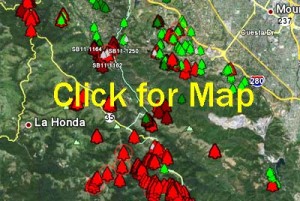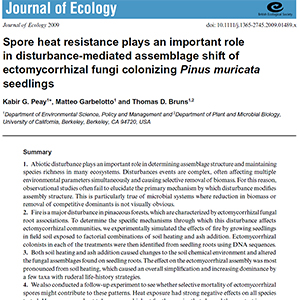My coast live oak trunk is oozing. I sprayed the bark in January. Can you estimate how long it will be before the tree fails and we have to remove it?
The symptoms on your oak may be caused by a range of issues. If oozing is accompanied by the presence of fine sawdust, then the tree is dying. Even if it is still green you may want to consider removing it if its failure may cause harm to people or property. The fine sawdust is caused by beetles tunneling in the tree. Oaks are only attacked by beetles when dying. If no sawdust is present, then the tree’s condition may be reversible.
Unfortunately, it is difficult to determine what may be the cause of the symptoms you describe. Sudden Oak Death (SOD) can attack an oak tree if California bay laurel is within 60 feet of the oak. You can use the free SODmap Mobile App to determine if you are in a high or moderate risk zone for SOD. To find out how to do that, go to www.sodmapmobile.org. There is also a YouTube video you can watch at https://youtu.be/zE0_q3EmIfs. If the information you gather suggests that it may be SOD, then repeat the phosphite bark application (such as Agri-Fos® combined with Pentra-Bark®) in the fall between October 30th and December 15th. You may also want to consider removal of bays within 30 feet from the oak. Go to http://nature.berkeley.edu/garbelottowp/?page_id=909 to find out about upcoming treatment training sessions to learn more about treatment options. If there are no bays within 60 feet of your oak and the SODmap mobile risk is low, then it likely isn’t SOD.
If you have watered your oak, it may be a root disease such as the oak root fungus or Phytophthora cinnamomi root disease. Make sure you stop watering and expose the upper root system to the air to slow disease progression. If you have never watered your oak, then it may be a secondary disease brought on by the long drought (ex. oak die-back fungus). These are diseases that are strongly affected by the genetics of the tree and weather conditions. In this case, you may want to try watering the tree now and then once again in 2 weeks. Then water once a month starting October 15th. Do not water between July 10th and October 15th. Watering should be done using a low flow approach to ensure that the soil gets wet up to 1 foot down and that no flooding of the tree ever occurs. Unfortunately, if the secondary disease is too advanced, despite all efforts, the tree may still die.







